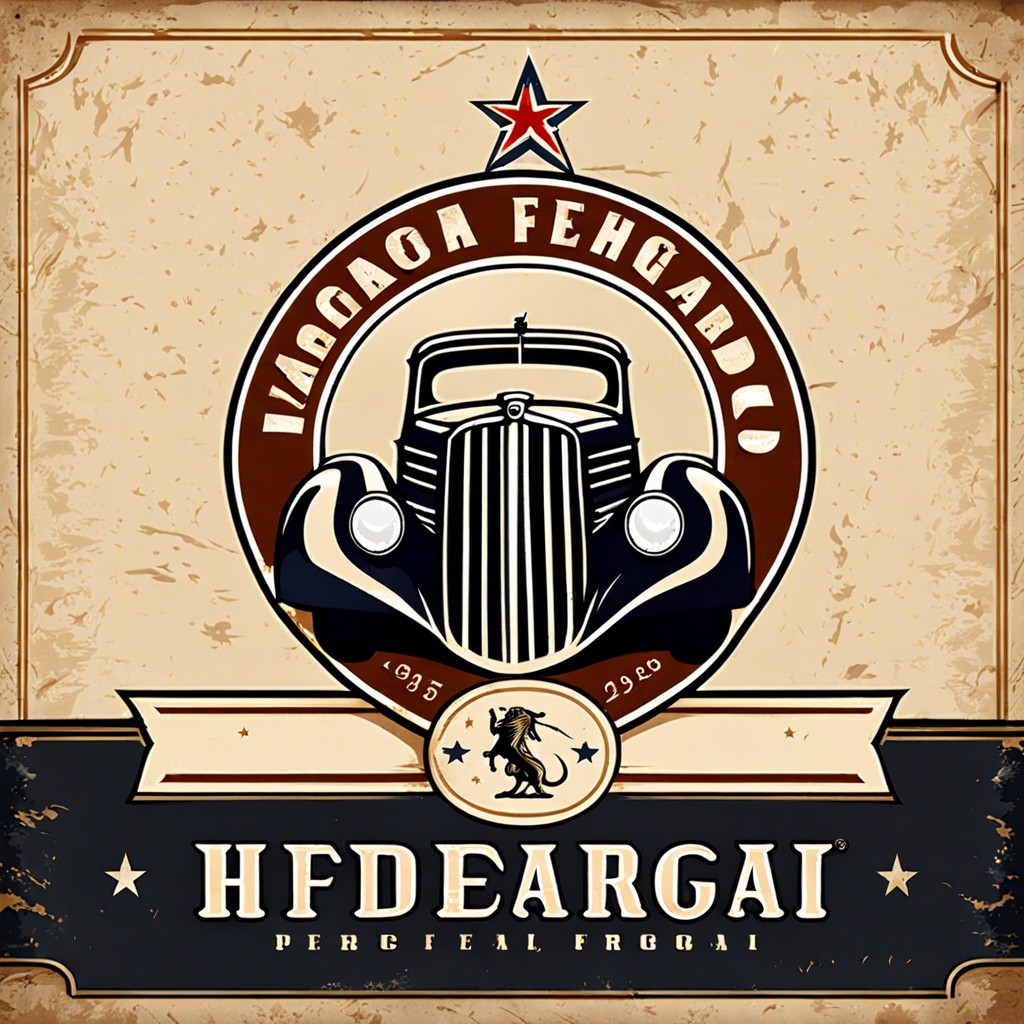Last updated on
This article provides insights into the significance and evolution of vintage logos in branding and their ongoing relevance in contemporary design.
Key takeaways:
- Vintage logos are visual time capsules of past eras.
- They offer insights into historical consumer trends and branding strategies.
- Vintage logos are characterized by classic typography, muted colors, and intricate details.
- Nostalgia and authenticity make vintage logos powerful tools for storytelling.
- Legal considerations must be taken into account when using or replicating vintage logos.
Definition of Vintage Logo

A vintage logo is a graphical emblem from a bygone era that embodies the aesthetic and cultural sensibilities of the time in which it was created. Often dating back at least 20 to 30 years, these logos serve as visual time capsules, reflecting the artisanship, typography, and color palettes prevalent during their respective periods. While they may represent products, services, or organizations that are no longer in existence, the timeless design of some vintage logos allows them to remain culturally relevant and recognizable. They capture the essence of their age while also symbolizing nostalgia and authenticity in a contemporary context.
Historical Significance of Vintage Logos

Vintage logos serve as visual time capsules, encapsulating the design aesthetics, cultural values, and technological capabilities of their respective eras. They provide critical insights into the branding strategies and market perceptions that prevailed during the periods they were created. The study of these logos offers a deeper understanding of historical consumer trends and societal preferences.
Some of these logos have withstood the test of time, evolving into iconic symbols that are instantly recognizable. Such longevity speaks to effective design principles and the ability of a brand to adapt while maintaining its core identity. When looking at vintage logos, consider how typography, color palettes, and graphic elements reflect the design norms and production methods available in that historical context.
The nostalgia associated with vintage logos can also trigger emotional connections, making them powerful tools for storytelling and heritage branding. These logos often have a legacy of trust and quality that brands can leverage to their advantage. Exploring vintage logos can thus provide a unique perspective on the historical narrative of a brand and its place within a cultural setting.
Characteristics of Vintage Logos

Vintage logos are often distinguished by their classic typography, favoring serif fonts which convey a sense of tradition and respectability. The color palettes tend toward muted and earthy tones, reflecting the printing technologies and design preferences of their time.
Another key feature is the intricate line work and decorative elements that echo the hand-crafted nature of past design practices. These logos may include ornate details, such as flourishes or embellishments, that are less common in the minimalist designs of today.
Simplicity in composition can be a hallmark of vintage logos, with a focus on clarity and ease of identification. This is in contrast to some contemporary logos which can be quite complex.
Imagery in vintage logos often draws from the natural world or reflects the industry of the brand they represent. Symbols, such as animals or tools, are employed to convey a company’s identity or values without the need for text.
Texture is also a notable characteristic. Many vintage logos incorporate a sense of wear or distress, emulating the effects of time and usage on physical materials. This textural quality adds to the authenticity and nostalgic appeal of the design.
Lastly, the use of symmetry and balance in vintage logos ensures a timeless and professional look that many modern brands seek to emulate in their retro-inspired branding efforts.
Modern Uses of Vintage Logos

… ……,,.. etc?,,,,, ?). … … ………
PRO
…
But…… …,…s A, …, , BPCR, ,…, …, etc, specialized … and etc …, …,… il,,… etc. Do you.
This is okay to use it.
Legal Considerations in Using or Replicating Vintage Logos

Understandably, vintage logos are often sought after for their nostalgic appeal and distinctive design, but it’s imperative to tread carefully when it comes to intellectual property rights. Copyrights can protect original works of authorship, including logos, for a particular period which varies depending on the jurisdiction and the date of creation. If the copyright has not expired, using or replicating a vintage logo without permission can lead to legal consequences.
Trademark laws also come into play if a logo is still used in commerce, as they protect consumers from confusion about the origin of goods or services. Trademarks can be renewed indefinitely, making it essential to check the current status before replication or use.
For those looking to utilize a vintage logo, consider these steps:
- Conduct a thorough search to identify if the logo is trademarked or copyrighted.
- If the logo is protected, seek permission or a license from the rights holder.
- Explore the option of creating a logo inspired by vintage design elements, rather than a direct copy, to avoid infringement.
- Consult a legal professional for guidance to navigate the complexities of intellectual property rights.




